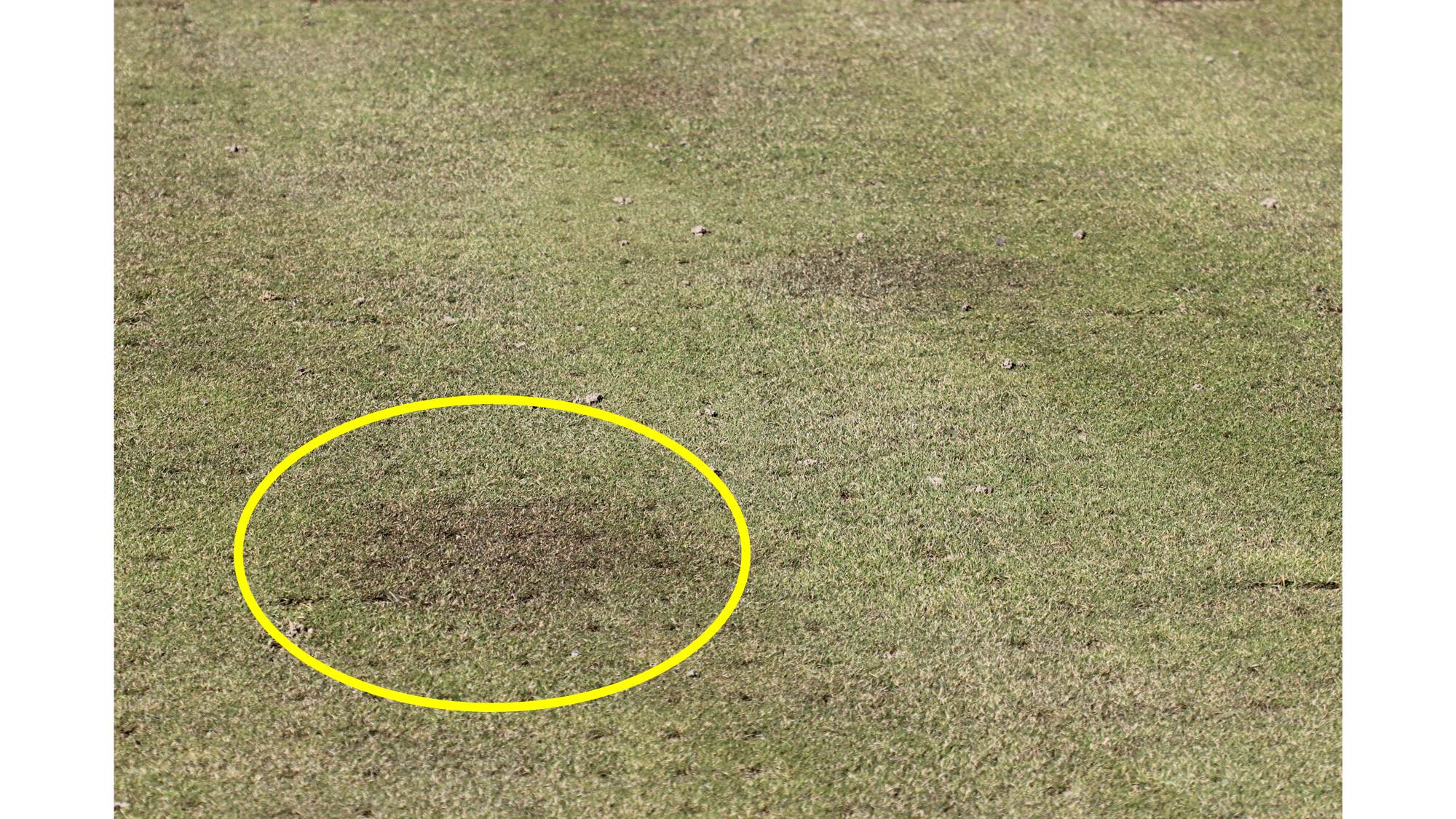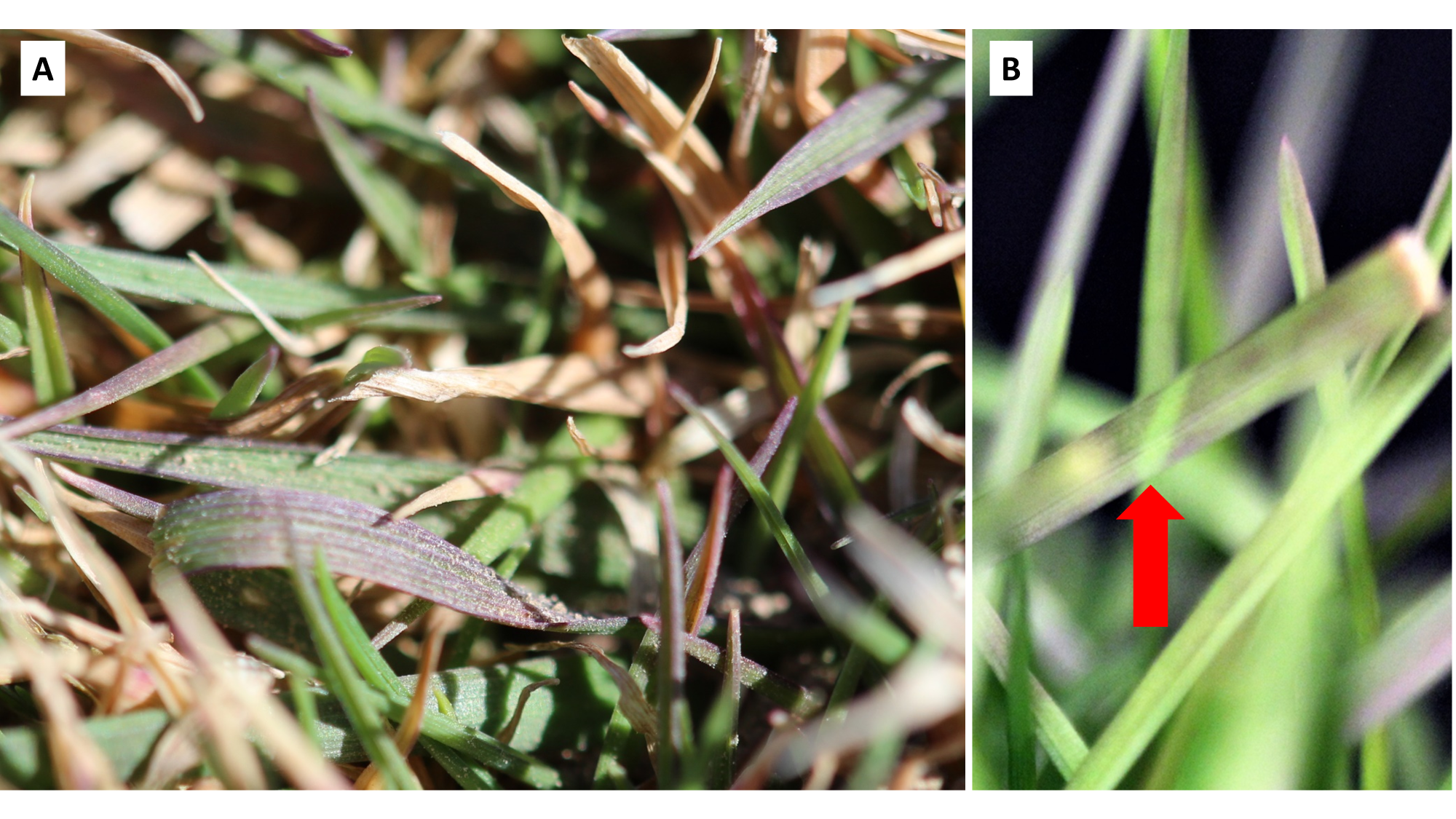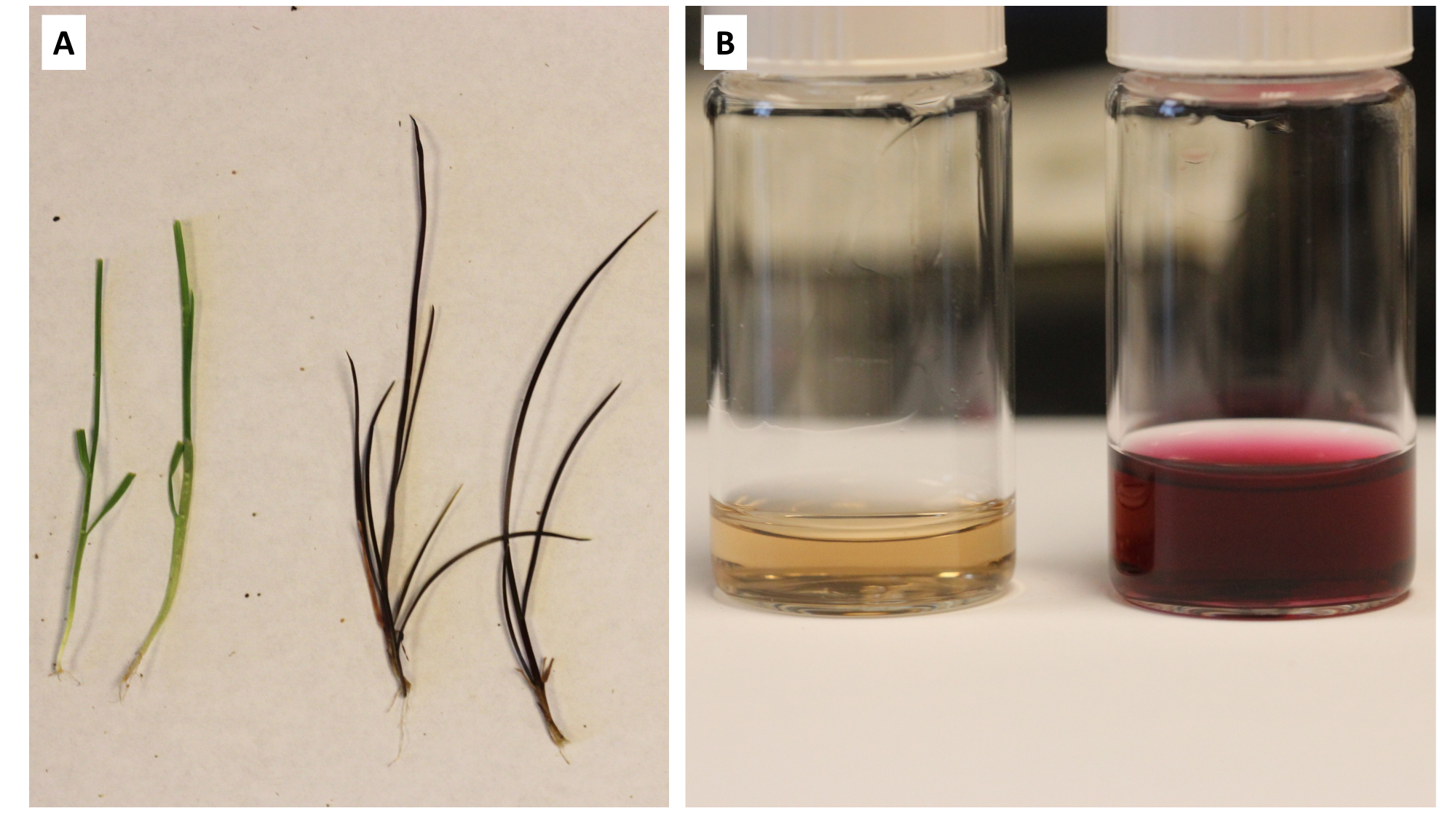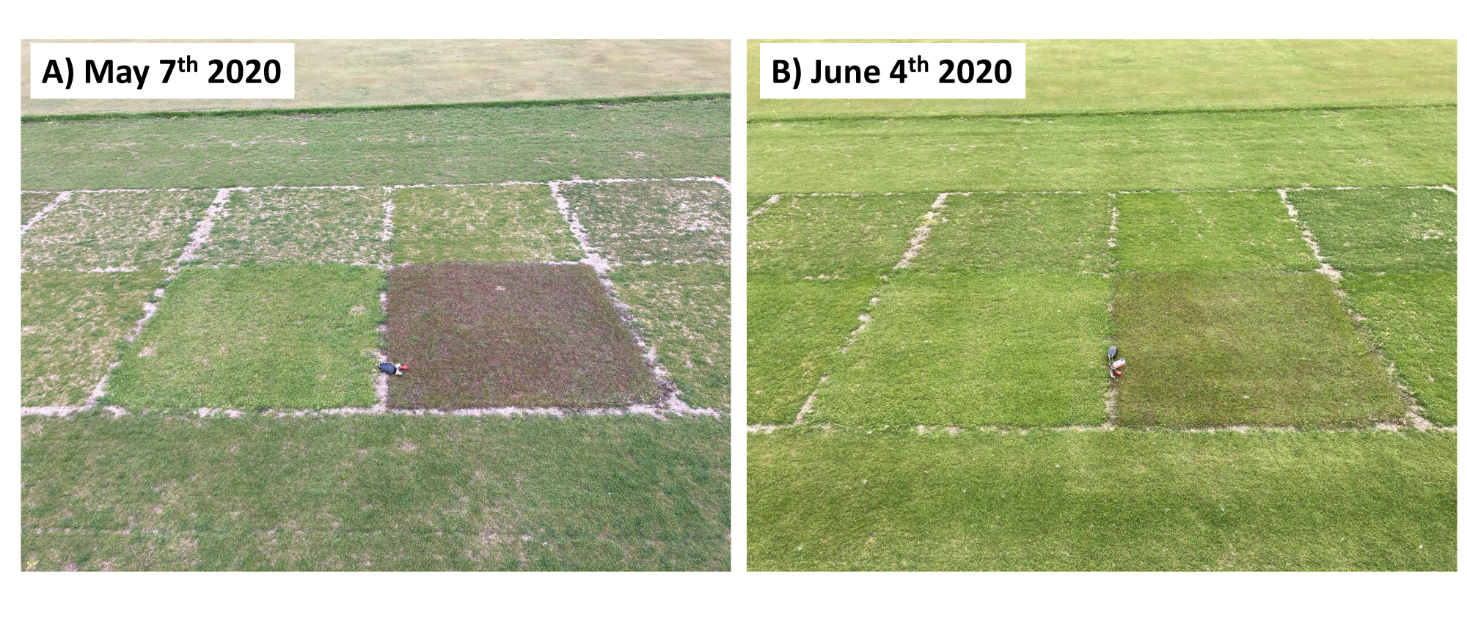By Dominic Petrella
In spring and fall, turfgrass leaves often change colors, similar to how the leaves of deciduous trees turn colors in the fall, most often turning a shade of purple or red. The degree to which leaves turn purple is related to the turfgrass species and even the specific cultivar: some species turn purple more easily than others and even some cultivars of the same species may or not turn purple. On golf course putting greens, tees, and fairways, brown/red patches can occur randomly over the surface due to genetic segregation of the species present (creeping bentgrass [Agrostis stolonifera] especially; Figure 1). Usually, the changing colors don’t signal that something bad is occurring, but it is a sign of plants responding to changing environmental conditions.
Looking closely at the patches you can see that many leaves in this area are not brown, but are in fact purple and sometimes red (Figure 2A). Entire leaves are not always purple, and sometimes only the margins or tips of the leaves may be purple. This is because the pigments that lead to the purple color, anthocyanins, are produced only by leaves (or areas of the leaf) that are exposed to light (Figure 2B). Anthocyanins are not always present in leaves, and only are produced during times of stress often associated with changing seasons.
Anthocyanins are plant pigments that can range in color from blue, purple, to red and are responsible for giving color to many berries like strawberries and blueberries as well as for the red color of the leaves of deciduous trees in the fall. In leaves of perennial plants like turfgrasses, anthocyanins usually only accumulate during times of stress, most often due to light-related stresses that occur when seasons are changing.
Light is the key component for leaves to produce anthocyanins and this is not necessarily connected to photosynthesis (Figure 3A). Constant high-intensity light (≥ 1,000 µmol m-2 s-1) given over a long period of time can cause plants to accumulate large amounts of anthocyanins, and blue light specifically causes the plants to produce anthocyanins (Petrella et al., 2016). Without this stress or specific light treatment, turfgrass leaves generally do not contain quantifiable amounts of anthocyanins (Figure 3B); these colorful pigments are only produced during times of light-related stress or during leaf senescence.
The most commonly known stress associated with anthocyanins and purpling is phosphorus deficiency, but just because turfgrasses are purple doesn’t mean there is a phosphorus deficiency, and vice versa. Work from Asha McElroy (a previous undergraduate researcher in the UMN turfgrass science group) showed that even with phosphorus deficiency, anthocyanins would only accumulate in creeping bentgrasses exposed to high levels of light (900 µmol m-2 s-1). If the plants were grown under 450 µmol m-2 s-1, little anthocyanin pigment accumulated, even with phosphorus deficiency (McElroy et al., 2019). Herbicides can often cause purpling in both resistant and sensitive species, and infection with some fungal disease can also lead to anthocyanin accumulation in leaves.
One prominent but usually unnoticed stress is the combination of low temperatures and high-intensity light which can occur in spring and fall on clear or mostly sunny days. This stress is generally termed low-temperature photoinhibition, a condition in which light is actually inhibiting photosynthesis. In turfgrasses, very high-intensity light is normally needed to stimulate anthocyanin production, but this requirement is reduced when air temperatures are lower, roughly < 50˚F. Because low temperatures decrease the rates of photosynthesis, plants will require relatively less light, and moderate quantities of light (~700 µmol m-2 s-1) that were previously not stressful under warmer conditions become more stressful – stimulating leaves to produce and accumulate anthocyanins (Figure 4).
This can be further exacerbated in the spring after snow melt, where turfgrasses haven’t been exposed to sunlight for months and are suddenly exposed to very high-intensity light. Similarly, shaded turfgrasses, suddenly exposed to more light after the surrounding trees lose their leaves in the fall may experience low-temperature photoinhibition and accumulate greater amounts of anthocyanins. The accumulation of anthocyanins under these conditions isn’t a bad thing; it’s a natural form of protection from the damaging levels of light, and these pigments may also help to warm the leaves. However, these purple plants may grow more slowly compared to nearby green turfgrasses. Newly seeded turfgrasses may also be more prone to low-temperature photoinhibition and purpling due to leaves being immature, and this purpling more than likely will not go away with phosphorus application as noted by Calvache et al. (2017).
Summary and Conclusions
Anthocyanins are blue, red, and/or purple pigments that plants produce under times of stress. Light is a key factor for plants to produce anthocyanins, and without the proper cues from the right light signal(s) these pigments won’t be produced by the plant, and in particular high-intensity light is often needed. Some turfgrass species are more adept at producing anthocyanins, rough bluegrass for example, and even some cultivars of the same species may or may not accumulate anthocyanins. Because purpling is sign of potential phosphorus deficiency, taking soil samples to confirm levels of phosphorus is important, especially if the purpling is widespread and not mottled across the turfgrass surface. Conditions that can prominently lead to purpling include the combination of low air temperature and high-intensity light often seen on clear to mostly sunny days in the fall, later winter, and early spring. Purpling leaves are not necessarily a bad thing, and are usually only a visual nuisance that will fade when the environment becomes more conducive for growth.
This article is continued in Part 2.
Literature cited
Petrella, Dominic P., J.D. Metzger, J.J. Blakeslee, E.J. Nangle, and D.S. Gardner. 2016. Anthocyanin production using rough bluegrass treated with high intensity light. HortScience. 51(9) 1111-1120. doi:10.21273/HORTSCI10878-16.
Calvache, S., A. Kvalbein, and T. S. Aamlid. 2017. Growing Substrates, Fertilization, and Irrigation for Creeping Bentgrass Establishment on Sand-Based Putting Greens. ITSRJ 13:394-399.
McElroy, A., Petrella, D.P., and Watkins, E. 2019. The impact of stress response on anthocyanin production in creeping bentgrass. Life sciences summer undergraduate poster symposium. Minneapolis, MN.



